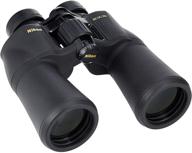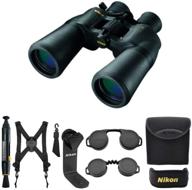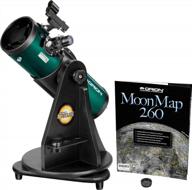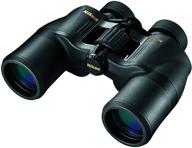
Review on 🔬 OMAX 40X-2000X LED Binocular Compound Lab Microscope: Mechanical Stage, Accessories Included by Dave Hammon

The best microscope in its price range.
I've recently developed an interest in microscopes so I did a little research and settled on the OMAX M82ES microscope which as you can see is in is offered in several different configurations. I want to share some of the things I learned from my research in this review to help you make your own purchasing decision. Let's start with magnification first. The instinctive response of the inexperienced user is to prefer higher magnification microscope sets. However, this is misleading as you won't get resolution above 1000X-1500X (see: www.microscope.com/education-center/articles/false-magnification/ and comments on this review and below). And as we will see below, most microscope kits do not offer an intermediate magnification between 1000x and the maximum magnification they offer (2000x or 2500x), so the maximum magnification compared to a 1000x microscope does not really provide an additional resolution. Compound microscopes get their magnification by combining eyepiece magnification with objective lens magnification. Lens magnifications are typically: 4X, 10X, 40X, and 100X. The most commonly used eyepiece magnifications are 10X, 20X, 25X. The 100X lens cannot be used as is, it requires a special immersion oil (see: en.wikipedia.org/wiki/Oil_immersion for an explanation); therefore inexpensive microscopes usually do not have this lens. As for the eyepieces, you usually get 10x or pairs of 10x + 20x or 10x + 25x. Now let's see what magnification these combinations give: 10X: 40X (with 4X lens), 100X (with 10X), 400X (with 40X), 1000X (with 100X). 20X: 80X (with 4X), 200X (with 10X), 800X (with 40X), 2000X (with 100X), 25X: 100X (with 4X), 250X (with 10X), 1000X (with 40X), 2500X (with 100X )[EDIT: I rewrote this analysis based on the comments. see comments section] When I first wrote this review, I wasn't quite sure how to calculate the theoretical limit of resolution for each lens. I don't have an exact formula yet as it depends on several factors including the wavelength of the illuminating light, but a comment on this review directed me to a rule of thumb that I also found in a Zeiss article on microscopy: The Rule states that the maximum magnification that can be expected from the lens is 1000 times the lens' numerical aperture - see zeiss-campus.magnet.fsu.edu/articles/basics/resolution.html). The numerical apertures and maximum magnifications for OMAX lenses are as follows: 4X (0.10/100X), 10X (0.25/250X), 40X (0.65/650X), 100X (1.25/1250X). So, barring incorrect magnifications, these are the magnifications we can expect from any objective/eyepiece combination (note that even this is optimistic, as we have estimated a maximum magnification that we are unlikely to achieve in practice): 10X: 40X (with 4X lens), 100X (with 10X), 400X (with 40X), 1000X (with 100X). 20X: 80X (with 4X), 200X (with 10X) 25X: 100X (with 4X), 250X (with 10X) - This will probably not be achieved since these are the maximum values for the respective target. Incorrect magnification can still help your naked eye see detail even if it doesn't bring out more detail. But if you were taking pictures you could probably also zoom in at 1000x to 2000x and see the same detail as with a 20x or 25x eyepiece instead of 10x. With that in mind, there's not much reason to choose the 25x over the 20x, and personally I'd be happy with even 10x eyepieces. That's why I chose the 40X-2000X microscope over the 40X-2500X microscope. But there are a few other reasons why I chose this OMAX model: 1. Stage operation. The slide holding system and the table adjustment are one of the main differences to cheaper models. The scene has an X/Y scale so you can mark the coordinates of the vantage point so you can easily find it later.2. condenser operation. The condenser is height-adjustable and has an iris diaphragm (in contrast to the plate diaphragm on cheaper models); the condenser can also be easily removed if necessary and replaced with a dark field condenser, for example. There is also a filter holder that slides out from under the condenser - just find a small handle that slides out.3. Covers coarse/fine coaxial focusing. Less expensive models don't have thin handles or aren't aligned. The coaxial arrangement is convenient because you don't have to move your hand as much when focusing the microscope. I would also settle for a monocular microscope, but they tend to be less functional than binocular microscopes and lack one or more of the above. Particularities. The main competitor of the OMAX M82ES is the AmScope B120, which has a Siedentopf head. This head is an advantage for AmScope as it offers a simpler setup process and is easier to reconfigure when more than one person is using the microscope. To counter this, the OMAX construction uses less plastic, which I prefer. OMAX also seems to have simpler settings. A few more things to know about this OMAX microscope: The lenses are preinstalled, but not all are set for optimal performance. There is a focus stand stop screw to prevent slides from being pushed into high magnification objectives (40x and 100x). This screw needs to be adjusted as it is not pre-installed and allowed on my sample. Slides must be mounted in high magnification objectives (40X and 100X - these objectives are spring-loaded to avoid damage, but this is best avoided by also limiting stage movement with this screw). Be sure to download and read the manual to familiarize yourself with the parts of this microscope. And before you fully unpack the microscope, I also recommend watching the OMAX introductory video on YouTube, which will show you the basic functions of the microscope. This is a fully featured microscope that can be further enhanced with OMAX or AmScope accessories. We offer a few accessories: OMAX pair of rubber eyecups for microscopes with 23.2mm eyepieces OMAX 60X achromatic objective lens (spring) for compound microscopes Some quick comments on these items: The rubber eyecups are very good and I wish they would be there even if you had to raise the price of the kit - they really make using eyepieces more convenient. - A 60X lens has a numerical aperture of 0.85, so it can theoretically achieve magnifications of up to 850x. I replaced my 1000X (oil) objective with this one and mostly use 10X eyepieces. The reason I don't use 1000x is because I don't need as much magnification and don't want to mess with applying and cleaning immersion oil. Even this 60x lens gives me more magnification, which I often need for most of the slides I study. Microscope tubes to the T2 mount (a simple universal mount also used by some telescopes) and then you can get an adapter from the T2 mount to your particular camera mount. Update on this aspect: I didn't find this solution very satisfactory - the illumination of the microscope creates a halo as it passes through the slide, which is registered in the photo. I don't know if there will be the same problem with a special camera - if anyone knows something, I'd appreciate feedback in the comments. It is possible that these problems are caused by the lack of the last optical element in this combination (since I am both removing the eyepiece and replacing it with an open path to the camera sensor). If you're looking for something less expensive and don't need all the features of this OMAX model, here's an interesting option I came across while searching: Levenhuk 50L NG Monocular 40-1280x Microscope Experimental Case
- Condenser: Abbe condenser NA1.25 with iris diaphragm; Lighting: passing (below) LED lighting, intensity adjustable; Focusing: Coaxial coarse and fine knobs on both sides
- Out of fashion
New products
Comments (0)
Top products in 🔭 Binoculars & Scopes

Nikon ACULON A211 8248 10x50 Binoculars (Black)

20 Review

Nikon ACULON 10 22X50 Binoculars Harness

12 Review

Discover The Wonders Of The Universe With Orion StarBlast 4.5 Telescope In Teal Color

14 Review

👀 Nikon ACULON A211 8x42 Binoculars: High Quality Optics for Exceptional Viewing

15 Review







